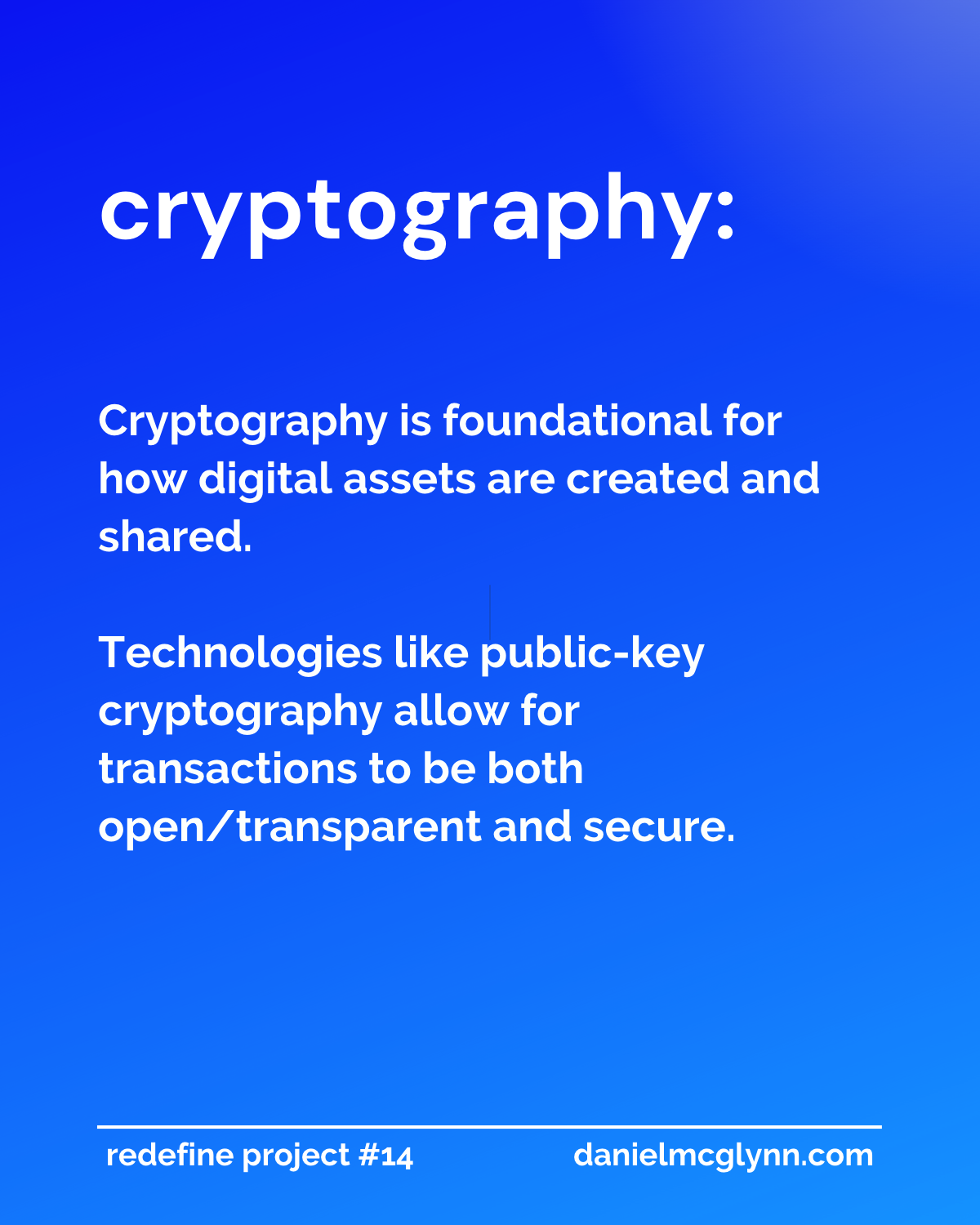Crypto is called crypto because of cryptography.
One of the main reasons why open, permissionless digital assets — or internet-native money — are able to exist is because they use a system of public key cryptography, or a form of asymmetric cryptography.

Public key cryptography enables two major aspects of digital assets systems:
- The open, transparent, digital ledger setup of a blockchain (this is the public side of public key cryptography, or a form of encryption that translates transaction details into a string of numbers and letters called an address that is broadcast to the underlying blockchain network and available for anyone to see.
- A level of security that allows people to hold digital assets. This is the private key side of cryptography, assets can only be moved from an address when signed by a private key, which can be held independently from the public key, which allows people on the other side a transaction to verify funds or balance information.
Put another way, encryption allows digital currencies to leverage the internet as a settlement layer for transactions. Because details can be both open (allow for things like verification and accounting) but also controlled by a single key, digital asset users can engage in peer-to-peer transactions without having to know one another, trust one another, or go through a shared platform like a bank or payment company.
At the same time, because digital assets based on public key cryptography have a private key, the system allows for people to self-custody their own digital assets in a non-custodial wallet — leading to new kinds of financial leverage and freedoms (while also requiring more personal responsibility).
Encryption also plays an important role in how blocks on a blockchain are created through a system of hashing. An encrypted hash function takes information (inputs) and returns a set of numbers and letters (output).
In the case of bitcoin, the hashing system is based on SHA-256. The secure hashing algorithm plays a role in the mining process and is a component of making each block in the blockchain immutable (mainly because the algorithm is like a one-way valve, where you can derive the output from the inputs, but you can’t derive the inputs from the output), making it impossible to overwrite or edit the hashing function.